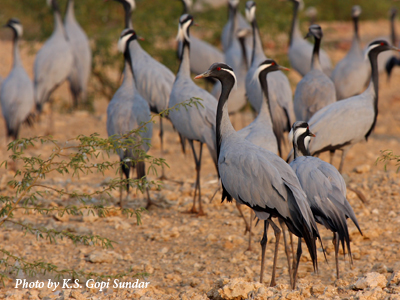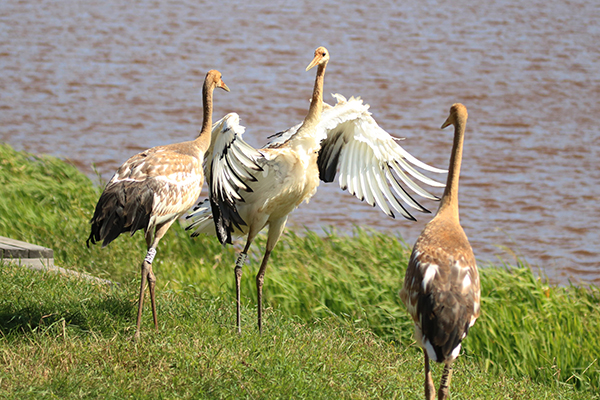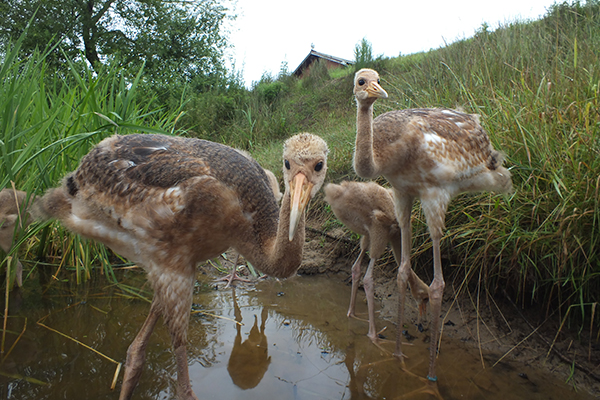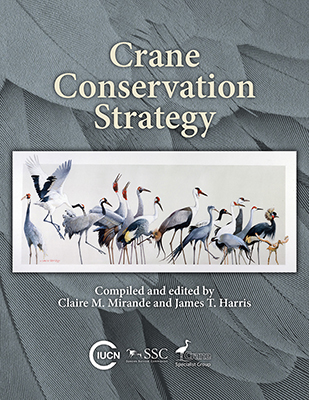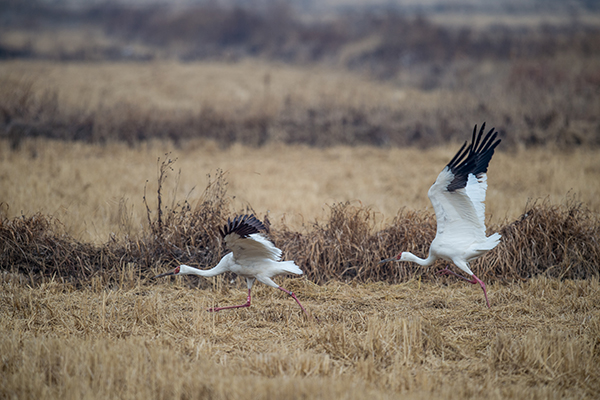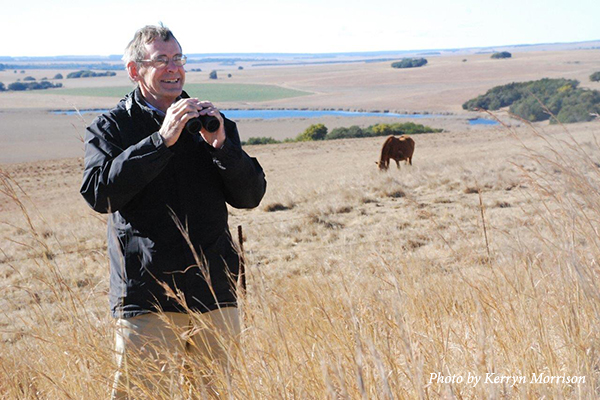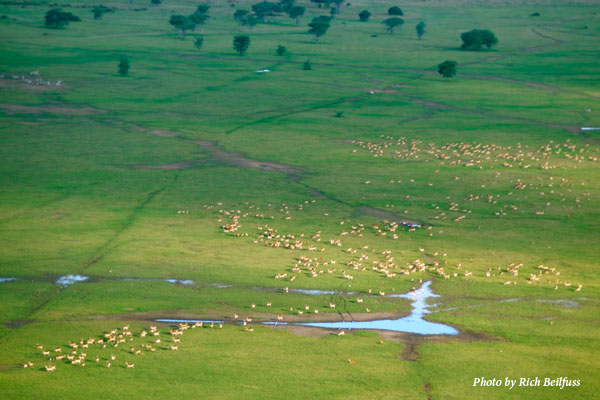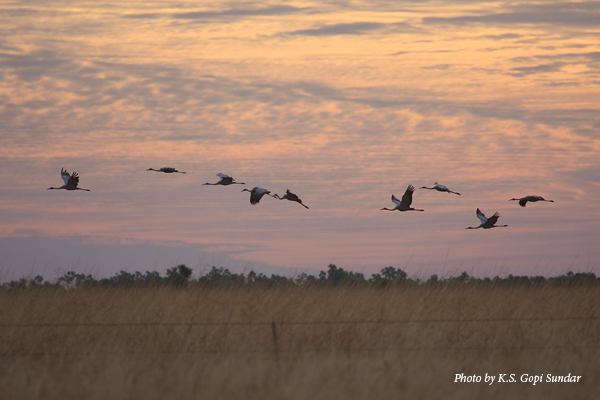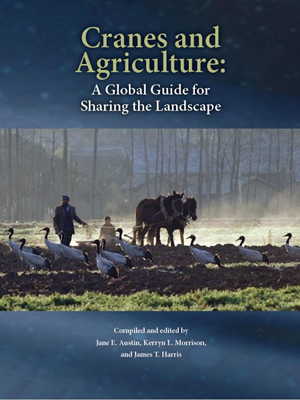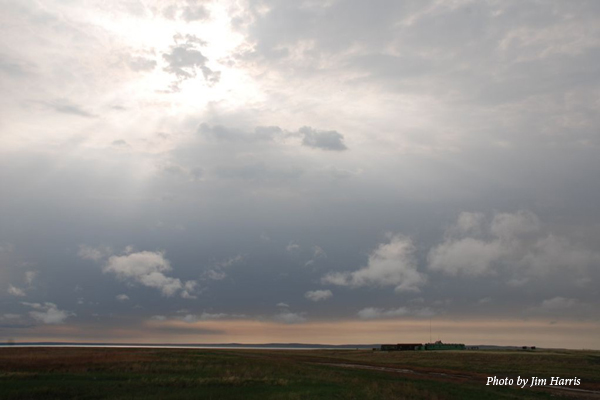 The unprecedented loss of up to 8,000 Eurasian cranes to an H5N1 highly pathogenic avian influenza virus in Israel’s Hula Valley in December 2021, was a tragic example of the potential for this virus to sicken wild birds, and now cranes in particular.
The unprecedented loss of up to 8,000 Eurasian cranes to an H5N1 highly pathogenic avian influenza virus in Israel’s Hula Valley in December 2021, was a tragic example of the potential for this virus to sicken wild birds, and now cranes in particular.
Category: Global Crane News
Working Together to Return Cranes to the Wild
 The combined wild populations of two iconic Asian crane species – the Endangered Red-crowned Crane and Vulnerable White-naped Crane – are less than 10,000 birds. Because of the precarious situation of these wild populations, the world’s zoos have established conservation populations for both species.
The combined wild populations of two iconic Asian crane species – the Endangered Red-crowned Crane and Vulnerable White-naped Crane – are less than 10,000 birds. Because of the precarious situation of these wild populations, the world’s zoos have established conservation populations for both species.
The Life and Times of Arete and Bomnak – The Khingansky Cranes Grow Up
 Red-crowned and White-naped Cranes are among the most cherished species in East Asia, not just for their grace and beauty but also because they nest in wild and remote wetlands on some of the most stunning landscapes of the region.
Red-crowned and White-naped Cranes are among the most cherished species in East Asia, not just for their grace and beauty but also because they nest in wild and remote wetlands on some of the most stunning landscapes of the region.
Crane Conservation Strategy – Now Available
 This landmark volume provides a wealth of information to guide the conservation of the world’s fifteen species of cranes and the ecosystems where they occur. It reflects the work and knowledge of dozens of devoted colleagues in the IUCN Species Survival Commission’s Crane Specialist Group.
This landmark volume provides a wealth of information to guide the conservation of the world’s fifteen species of cranes and the ecosystems where they occur. It reflects the work and knowledge of dozens of devoted colleagues in the IUCN Species Survival Commission’s Crane Specialist Group.
The Siberian Crane – Love is found!

“Found it! Found it! After 219 days, it is still alive, No. S26!” After seeing the photo of “Love”, Wang Zhiru, Director of Jiangxi Academy of Forestry, finally felt a load lifted from his mind.
Celebrating Jim Harris’ Life and Legacy
 Family, friends and colleagues are invited Sunday, June 16, from 10 a.m. to 12 noon, to celebrate the life and legacy of Jim Harris, our former Director of Public Education, President and CEO and, most recently, Senior Vice President of Asia.
Family, friends and colleagues are invited Sunday, June 16, from 10 a.m. to 12 noon, to celebrate the life and legacy of Jim Harris, our former Director of Public Education, President and CEO and, most recently, Senior Vice President of Asia.
Notes from the President: Wildlife Poaching in Zambia’s Kafue Flats Threatens Wetlands and Wattled Cranes
 The Kafue Flats in Zambia, Southern Africa, is one of the most productive wetlands on Earth for wildlife and people. More than 3,000 Wattled Cranes – a third of the total global population – are found on the Kafue Flats, along with Grey Crowned Cranes and hundreds of thousands of other water birds.
The Kafue Flats in Zambia, Southern Africa, is one of the most productive wetlands on Earth for wildlife and people. More than 3,000 Wattled Cranes – a third of the total global population – are found on the Kafue Flats, along with Grey Crowned Cranes and hundreds of thousands of other water birds.
Won’t you be my neighbor? Studying Sarus and Brolga in northern Australia
 Yesterday evening (India time), I received a message from the Editor that our submission has been accepted for publication in the journal “Emu – Austral Ornithology.” This journal is Australia’s foremost source of scientific information on birds, and it is not easy to get work published here. Wooo–hooo!!
Yesterday evening (India time), I received a message from the Editor that our submission has been accepted for publication in the journal “Emu – Austral Ornithology.” This journal is Australia’s foremost source of scientific information on birds, and it is not easy to get work published here. Wooo–hooo!!
Cranes and Agriculture: A Global Guide for Sharing the Landscape – Just Published!

The need to share information via a publication that outlines how cranes can live harmoniously on agricultural landscapes with farmers and agricultural producers served as the impetus for a group of researchers and specialists to create the publication “Cranes and Agriculture: A Global Guide for Sharing the Landscape.”
Remembering Jim Harris – Champion for the conservation of cranes and wetlands
 “The haunting calls of the world’s cranes are sadder today because they have lost a devoted friend, and the conservation community has lost a true hero.” ~ Kenneth Strom, National Audubon Society
“The haunting calls of the world’s cranes are sadder today because they have lost a devoted friend, and the conservation community has lost a true hero.” ~ Kenneth Strom, National Audubon Society

